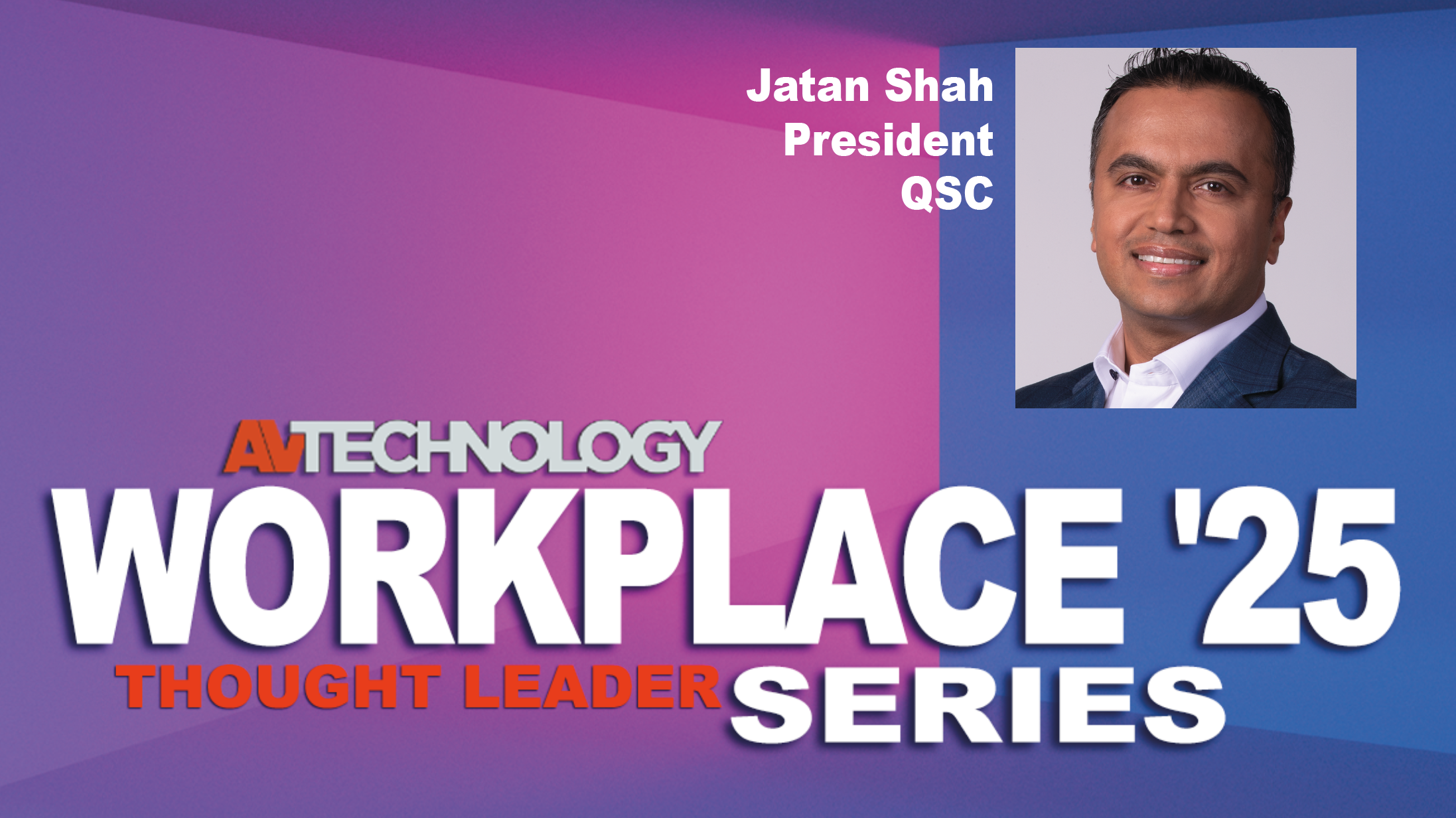AVT Question: Please share how technologies are helping to reshape the workplace and create user-friendly environments.
Thought Leader: Jatan Shah, President at QSC
Organizations are increasingly prioritizing intelligent spaces that enhance collaboration, energy efficiency, and overall workplace experience. As companies reassess their real estate strategies, there is a growing emphasis on optimizing underutilized spaces through technology-driven solutions that foster seamless communication and sustainability.
Advancements in technology, including sensors and AI-assisted workflows, are making hybrid work setups increasingly efficient and seamless. These innovations enable spaces to adapt in real time, supporting a blend of in-person and remote collaboration while enhancing productivity and user experience.
The ability to harness data from built environments—ranging from space utilization to energy consumption and user interactions—is unlocking new opportunities for workplace optimization and strategic decision-making." —Jatan Shah, President at QSC
Scalable and adaptive technology is becoming essential for cost-effective integration, ensuring workplaces can evolve alongside shifting business needs while maintaining long-term value. The intersection of data, automation, and smart infrastructure is enabling environments that respond dynamically to occupant behavior, improving both operational efficiency and user experience.
The ability to harness data from built environments—ranging from space utilization to energy consumption and user interactions—is unlocking new opportunities for workplace optimization and strategic decision-making. By leveraging these insights, organizations can create environments that support productivity, enhance employee engagement, and drive more sustainable business practices. This evolving landscape underscores the importance of solutions that drive efficiency, engagement, and innovation—shaping the future of work.

